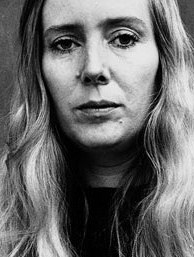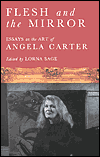Mina Loy, Insel. Melville House – TLS
“Wishing to get on terms with an acknowledged surrealist, we took him to a café…” so Mrs Jones, the narrator of Mina Loy’s neglected modernist novel, explains her first encounter with Insel, the tramp artist. In the watering holes of 1930s Paris, at the Lutetia Hotel and the Dôme café, they develop a relationship of mutual “parasitism”: she feeds and sometimes houses the derelict painter, he tolerates her plans to improve his life or write his biography. “Don’t over do it”, he suggests, but over-doing it is precisely what Mrs Jones has in mind. As her theories about this “will-o’-the-wisp” man become more intricate, Insel himself becomes less and less substantial, an abstract collection of rags and bones. She understands that the poverty of many artists means they may become, like Insel, con men, preying upon “the hospitalities of modest little women”. But his destitution fascinates her and she treats it seriously, finding in his unworldliness a parallel to her own artistic struggle to renounce the forms of a masculine universe.
More dangerously, and typical of a long line of bohemians fascinated by life in the gutter, she is tempted by his negative credo: “One must die”, with its promise of self-eradicating bliss. As the unlikely friends sit in yet “another stray café”, the modern city flickers before their eyes – car lights, hoardings, electric signs – but little intrudes on Mrs Jones’s passionate contemplation. Before the world recedes entirely, however, and Insel draws her into self-annihilation, a striking clock snaps her back into the here and now, and makes her put up a fight.
Insel, Loy’s only novel, was written in the mid-1930s and inspired by her relationship with the German surrealist painter Richard Oelze. It remained unpublished until 1991 and now gets a second outing from Melville House with a new ending unearthed from the archives suggesting morphine addiction as a key to Insel’s behavior. This is an intriguing addition, but waylaying, as the novel’s interest lies not in his unfeasible ‘character’, but in Mrs Jones’s fervent analysis of what he means to her. She alone perceives Insel’s “intrinsic quality” as someone “too surrealistic for the surrealists”, and the novel represents her battle to be “let…in on” the occult mystery of the “rays” he transmits, to “get at” his tantalizing “aura” (Insel is so ethereal, he is no longer capable of actually painting), to claim for herself his quasi-metaphysical powers of vision.
As we have suspected all along, the odd couple’s “uncanny intimacy” turns out to be a more one-sided affair: Insel’s irreality may be seductive but it is also comically enfeebling. His ineptitude and dependency do not make him much of a sparring partner and Mrs Jones appears increasingly to be boxing with a phantom (“I must have always known he had never the slightest idea of what I was talking about”), her target is not the man, but an image of a patriarchal and disengaged avant-garde that has let “present actuality…go hang”. Mrs Jones’s final victory then is wrested from within herself. Rejecting once and for all Insel’s charismatic “death’s-head” (the novel’s original title), she declares, rather, “One must be ripe”. Taking leave of the unearthly vagrant, with a renewed determination for her own art, she turns back to life.














